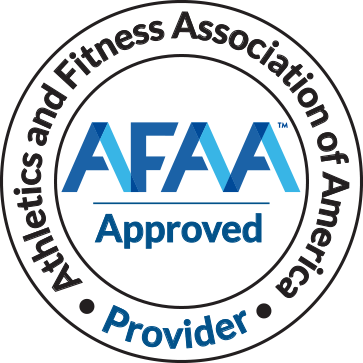Building strong relationships with clients is the cornerstone to success. As certified personal trainers and group fitness instructors, it's our duty to maintain professional boundaries while delivering top-tier service. This article will guide you through the importance of respecting personal and professional boundaries, and even provide real-life scenarios to help you navigate these situations.
Understanding Your Scope of Practice
As fitness professionals, it's vital to understand our scope of practice. The scope of practice for certified personal trainers and group fitness instructors refers to the services that professionals are qualified to provide, based on their certification, education, and training.
Certified personal trainers are equipped to design and implement exercise programs for individuals or small groups. They can offer advice on fitness goals, demonstrate exercises, and monitor client progress.
Group fitness instructors, on the other hand, lead larger groups through pre-choreographed or freestyle workouts. They must ensure the class is safe, effective, and fun for all participants, regardless of fitness level or experience.
While these roles may overlap, it's essential to stay within your expertise level. Providing services outside your scope could lead to ineffective training, injury, or even legal issues.
Setting Personal and Professional Boundaries
Setting boundaries is a critical aspect of any professional relationship. Here are some guidelines to follow:
1. Respect Privacy
Respect your clients' privacy. Never share their personal information without consent. Additionally, avoid prying into their private lives unless it's necessary for their fitness journey.
2. Maintain a Professional Relationship
While it's essential to build rapport with clients, remember that you are a fitness professional first. Avoid blurring the lines between personal friendships and professional relationships.
3. Set Clear Expectations
From the onset, communicate your role as a trainer or instructor. Make sure your clients understand what they can expect from you and what you expect from them.
4. Adhere to Professional Ethics
Always uphold the ethical standards set by your certifying organization. This includes treating all clients fairly, providing safe and effective workouts, and continually improving your skills through continuing education.
Dealing with Clients Who Push Boundaries
One of the challenges fitness professionals often face is dealing with clients who push boundaries, whether personal or professional. Here are some strategies to handle such situations:
1. Be Assertive Yet Tactful
When a client pushes boundaries, address it assertively but tactfully. Clear communication is key.
2. Use a Written Contract
A written contract can be an effective tool to set boundaries with your clients. It should clearly state the terms of your professional relationship.
3. Reinforce Communication Norms
Boundaries are reinforced by behaviors. Be clear about communication norms and reinforce them.
4. Discontinue Training
If a client insists on crossing a boundary, this is a very unhealthy relationship. If they can’t respect the boundaries that have been established, it may be necessary to stop training that client. This is an extreme solution that should only be used when the client has demonstrated that they can’t respect your boundaries and won’t or can’t change their behavior. Unfortunately, sometimes it can be necessary. Your health matters, too!
Real-Life Scenarios and How to Handle Them
Let's explore three common scenarios where maintaining professional boundaries comes into play:
Scenario 1: Personal Information Sharing
Lisa is a personal trainer who finds herself in an unexpected situation. Her devoted client, a man named James, is in the middle of his workout when he begins sharing about his stressful job situation.
She doesn’t mind hearing a few details and expressing empathy about his situation. But then, James stops exercising and sits down to continue the conversation.
What can Lisa do? It seems like their training session is coming off the rails, and turning into therapy. Lisa is not a mental health professional, and knows that it’s important to maintain the professional boundary with her client so that the overall training relationship remains strong.
Ideally, Lisa would acknowledge what James has told her, and give some encouragement that’s related to their workout. For instance she might say something like, “James, I hate that you’re having to deal with _______, but it says a lot about your strength of character that you’re here training even though you feel this way. Let’s try to redirect that frustration into your workouts — exercise can be a great way to cope as you get through difficult times.”
This lets James know that Lisa has heard him and is trying to help within her professional ability. Redirecting frustration into exercise can, indeed, be a great tool for dealing with those types of feelings.
Keep in mind that not every situation will end with going back to the workout. Sometimes, life situations are huge. It might be necessary to stop the workout and let them take some time. This isn’t the ideal, but know your clients’ limits. If they need a break, give them one.
Scenario 2: Blurred Lines Between Friendship and Professionalism
Robert is a group fitness instructor who is reminding his class about the Thanksgiving schedule. After class, two participants — Laura and her husband David — are talking to Robert about how much of a headache Thanksgiving is going to be with some of their relatives.
Although Robert does not share a personal friendship with the couple, Laura lights up and invites Robert to their family Thanksgiving, and David agrees that this would be great.
Robert is worried that there’s a professional line that’s being crossed, so how should he deal with this?
Though the invitation is well-intended and sincere, Robert understands the need to uphold the professional line that exists between him and his clients.
Responding to this scenario requires tact and professionalism. Robert could express his gratitude for their kind gesture, but also emphasize the professional nature of their relationship. He might say, "Laura, David, your invitation is greatly appreciated. However, as your fitness instructor, it's important we maintain our focus on achieving your fitness goals."
After declining the invitation, an effective strategy would be to steer the conversation back towards fitness. Robert could use this opportunity to discuss how they can stay committed to their fitness journey during the holiday season. He might suggest, "Thanksgiving, while challenging, presents a unique opportunity to incorporate fitness into your celebrations. This could actually help give you a way to deal with family frustration over the holidays."
To further support Laura and David, Robert, as a fitness professional, can provide additional resources. Sharing articles or blog posts about staying fit during the holiday season could be beneficial. This approach not only reinforces the professional boundaries but also ensures that the focus remains on Laura and David's fitness journey — the primary purpose of their relationship with Robert.
Scenario 3: Clients Seeking Medical or Nutritional Advice
India is a certified personal trainer, but she doesn't have any nutritional certifications or degrees. Her client, Zachary, has been sending food logs just for accountability, but James has wanted more specific information on what his macros should be at every meal, how much of one nutrient he should get, and very specific questions about diet. Furthermore, whenever he has a medical issue, Zachary keeps asking India if she thinks he might have a thyroid condition.
How should India maintain her professional boundaries and remain within her scope of practice?
As a certified personal trainer, India has a wealth of knowledge and expertise in physical fitness. However, when Zachary seeks specific advice on nutrition and potential medical conditions, she is not qualified to give what Zachary’s looking for. It's important for India to reinforce her areas of expertise while also acknowledging her limitations, especially in fields where she lacks formal certification or training.
She can handle this professionally by openly communicating with Zachary. She should clarify that while she is equipped to provide guidance on physical fitness and general healthy eating habits, detailed nutritional guidance and medical advice fall out of her purview. This not only sets clear expectations but also reinforces her commitment to professional integrity.
Moreover, India should encourage Zachary to consult relevant specialists for his specific concerns. For detailed information on macros and nutrients, a registered dietitian would be the appropriate expert. Similarly, for any medical concerns, Zachary should ideally consult a healthcare professional.
Despite these challenges, India's focus on Zachary's fitness goals should remain unwavering. By redirecting the conversation back to his fitness journey, she can ensure that their relationship stays within her scope of practice and ensure Zachary receives the appropriate guidance for his specific needs. It's a reminder that our role as fitness professionals is to empower our clients on their fitness journey while respecting our professional limitations.
Putting It All Together
As fitness professionals, we must maintain professional boundaries to provide the best service to our clients. By understanding our scope of practice, setting clear boundaries, and effectively handling boundary-pushing situations, we can foster a positive, productive training environment. Remember, professionalism isn't just about your certification — it's about how you interact with and respect your clients.
Stay fit, stay professional!
Learn more about facial fitness and rejuvenation here!







